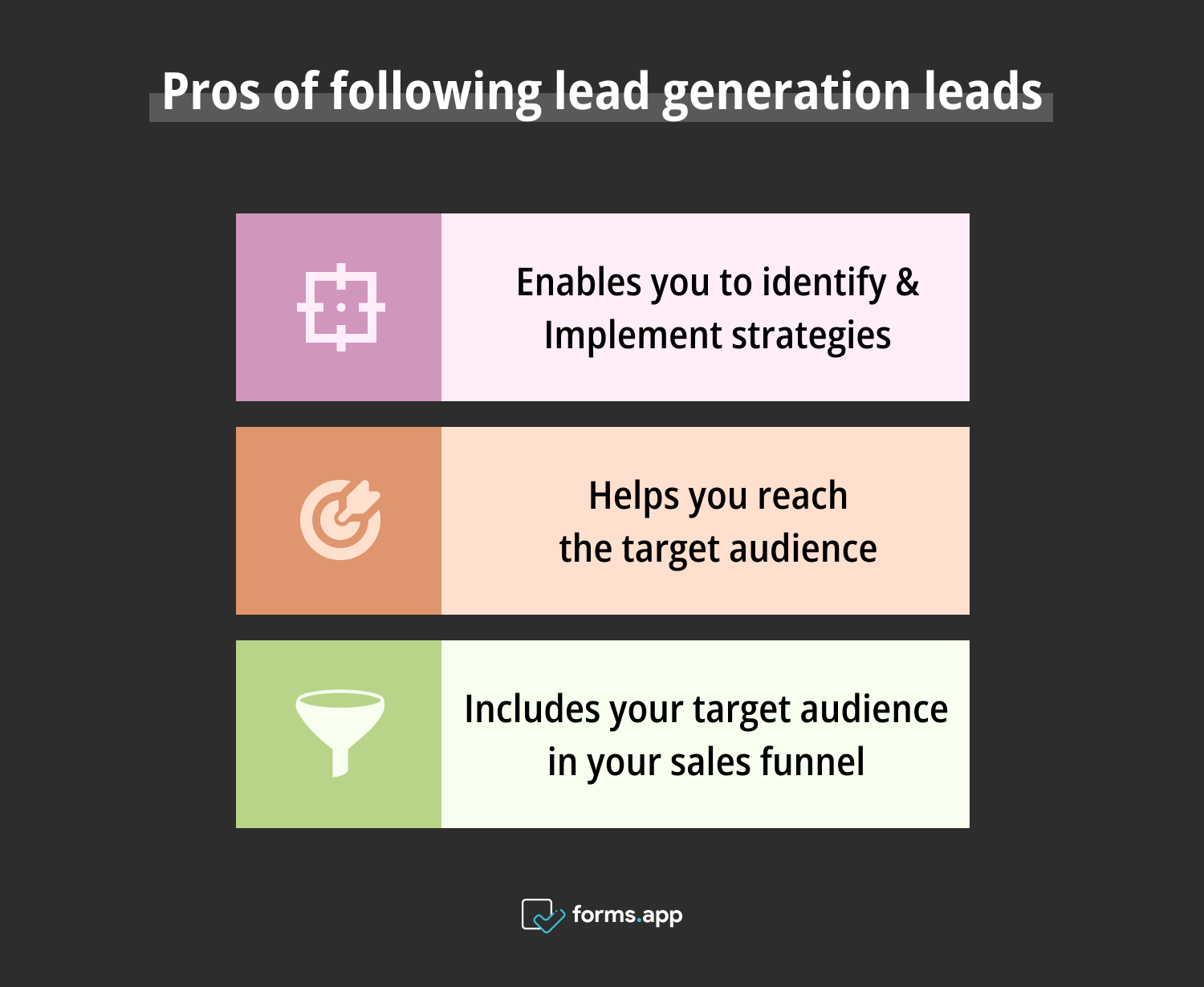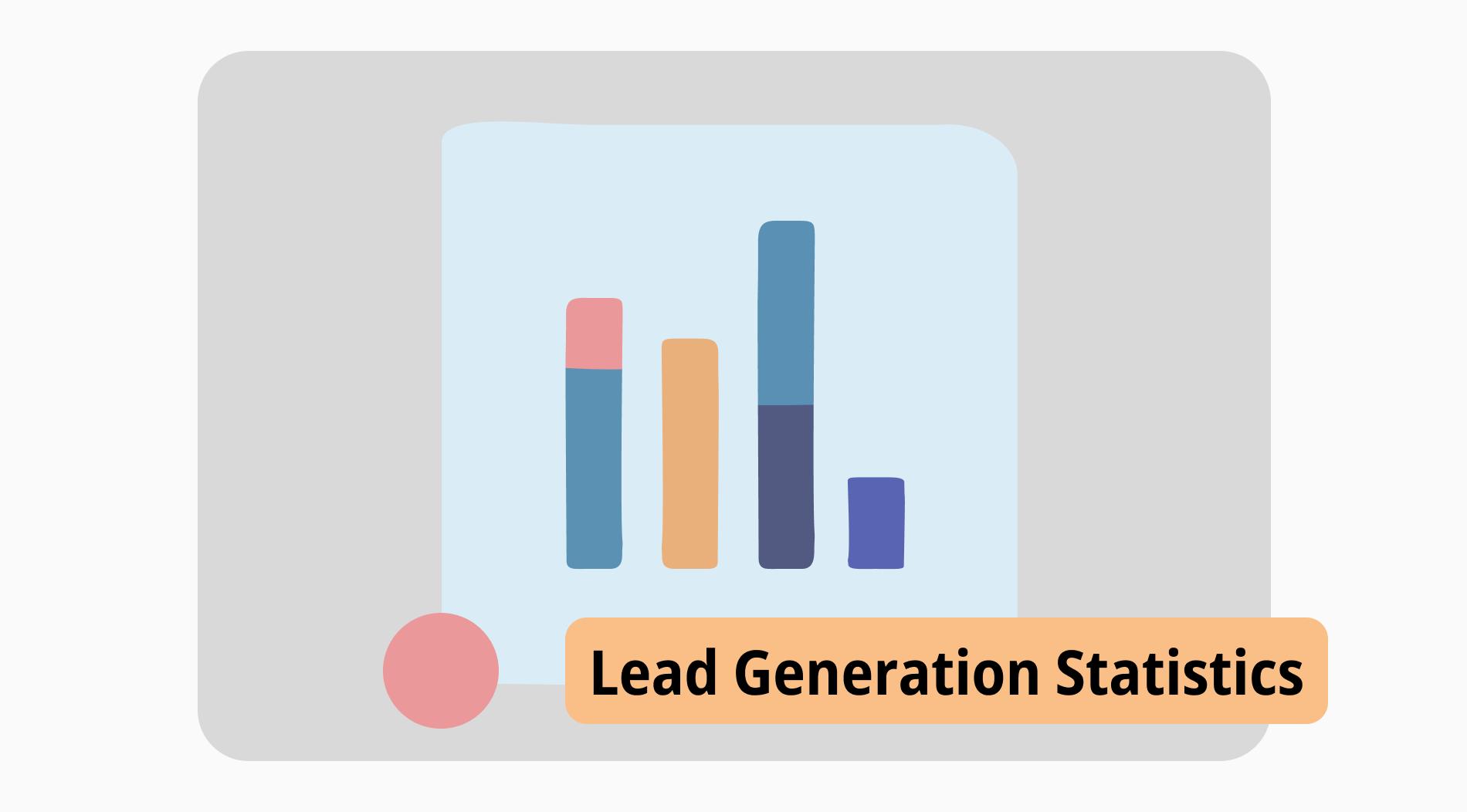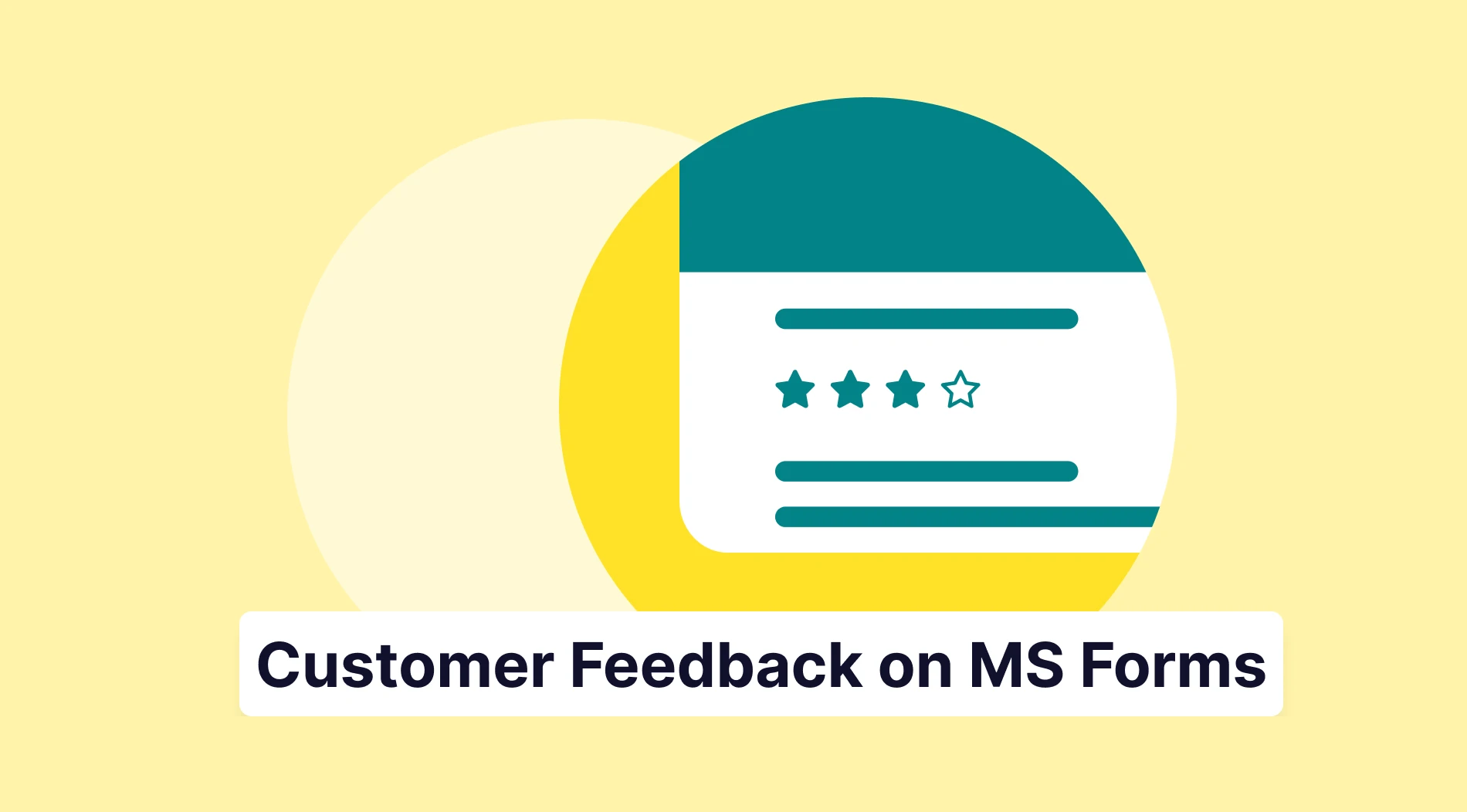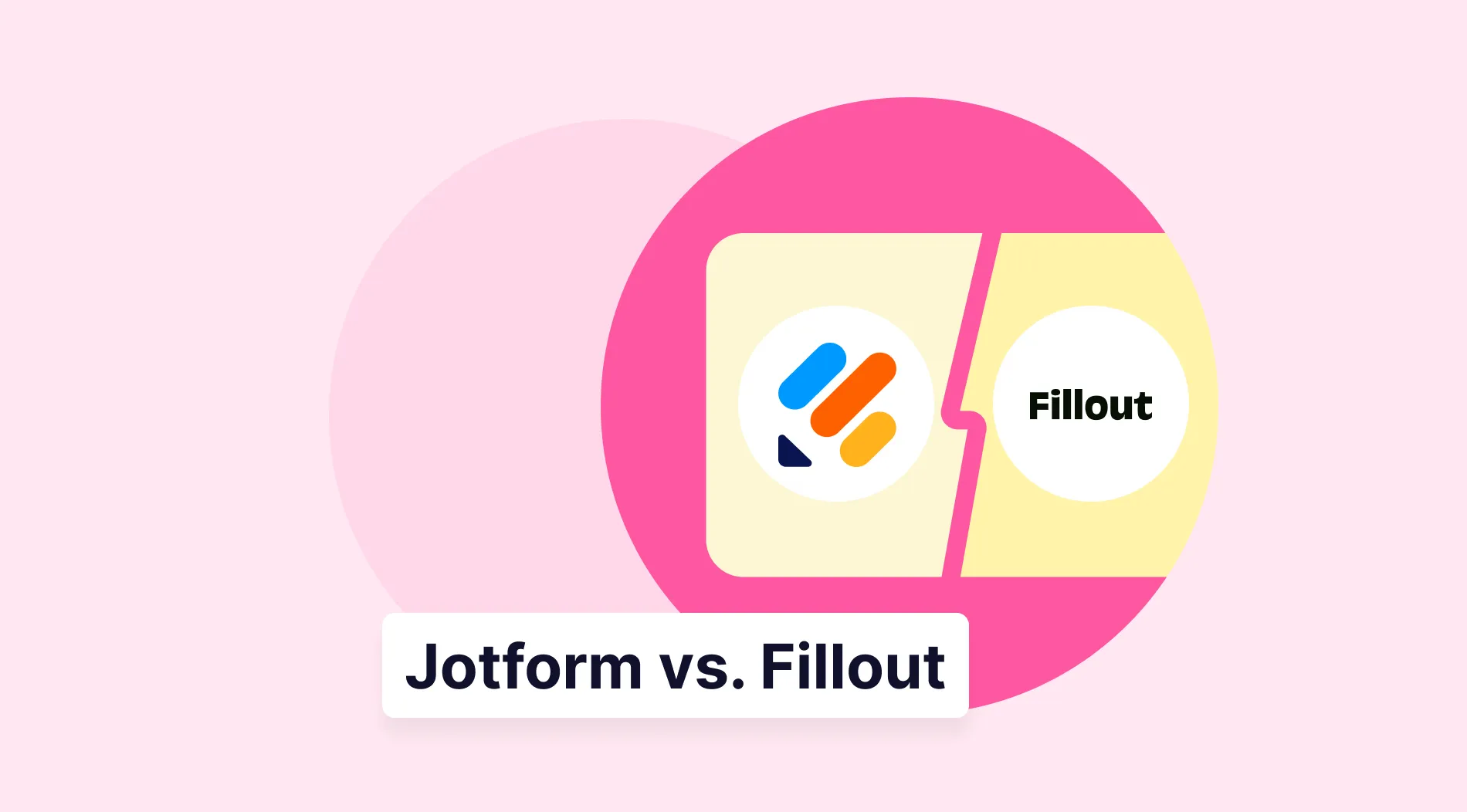Companies can only be successful in digital marketing by correctly identifying and reaching their target audiences. After placing the target audience, reaching them refers to the process of generating leads. A successful lead generation strategy results in increased sales and brand growth by reaching large numbers of people.
We have compiled 25+ lead generation statistics to help you understand the lead generation process and determine the right strategies. With our statistics, you will learn the lead generation process down to the finest details and put it into practice. Without wasting any more time, let's move on to our B2B lead generation statistics that will give you ideas:
What is lead generation?
Lead generation is the process of reaching potential customers interested in your company's products or services and involving them in the sales process.
It includes collecting customers' information and promoting products and services by reaching them based on this information. Many tools, such as emails and social media platforms, can be used in this process.
Why do you need lead generation statistics?
Lead generation statistics will help you understand the topic by providing you with experience-based information. They will also enable you to identify and implement the right strategies when generating your leads. To reach your target audience effectively and include them in your sales funnel, you should take a look at lead magnet statistics.

Reasons to check lead generation statistics
25+ Amazing lead generation statistics for your business
Properly conducted lead generation builds trust in your brand. With our 25+ lead generation industry statistics and marketing statistics, you will learn how to succeed in marketing. By applying what you learn, you will better serve your target audience who need the products and services you offer. Now let's move on to 25+ lead generation statistics:
1. For 53% of marketers, lead generation makes up at least half of their marketing budget.
Zippia released a statistic showing how much of marketers' marketing budgets lead generation takes up. It shows that lead generation accounts for at least half of the marketing expenditure for 53% of marketers. This statistic shows the importance marketers place on lead generation.
The fact that marketers allocate half of their budgets to lead generation indicates that it is essential to business success. Lead generation enables companies to grow their market share and build a loyal customer base. This is why you should allocate a large portion of your marketing budget to lead generation.
2. Content marketing is one of the most effective ways to generate leads.
Demand Metric revealed a statistic showing how content marketing outperforms outbound marketing in lead generation. Compared to outbound lead generation strategies, content marketing generates three times as many leads. This statistic published by Demand Metric gives you the opportunity to review your lead generation strategies.
Content marketing is a crucial tool to attract potential leads to your brand. In addition to reaching more consumers, using content marketing to reach your target audience allows you to build brand awareness. By using content marketing through different platforms and tools, you can build trust with your customers and reflect your expertise.
3. Lead generation is the #1 marketing campaign priority, according to 50% of marketers.
Exploding Topics conducted a survey on the importance marketers place on lead generation. Their survey shows that 50% of marketers rank lead generation as the top marketing campaign priority. This rate reveals the importance of lead generation for companies' sales and marketing efforts.
Lead generation allows you to obtain potential customers' information and communicate with them. It also brings you potential customers who may be interested in the services you offer and allows you to collect their information. So you can stand out in the market and get ahead of your competitors.
4. Marketing professionals report that the biggest challenge in marketing is generating high-quality leads.
Zippia shared an interesting fact that can help you plan your route better. The data shows that producing high-quality leads is the largest issue, according to 37.1% of marketers. Generating high-quality leads is critical for the long-term success of your business.
When generating leads, the goal is to reach consumers who will be interested in the products and services you offer. In order to create high-quality leads and efficiently progress through the sales funnel, you should set your strategies correctly and utilize different channels.
5. The average cost per lead is around 200 dollars on average.
An illuminating study by Marketing Charts reveals the average cost of generating leads for companies. According to their survey, the average cost per lead for all the organizations examined was nearly $200 ($198.44). The cost of lead generation will remind you of the importance of using your marketing budget correctly.
Lead generation will help you use your marketing budget effectively and get the most out of it. You can correctly identify your target audience, who will be interested in the products and services you offer, and use your budget to reach them. This is how lead generation can save you money on your marketing budget.
6. Marketing automation increases lead generation.
As a result of its research, APSIS presented a statistic showing the contribution of marketing automation to lead generation. 80% of surveyed marketers stated that marketing automation increases lead generation. It makes your marketing efforts and lead-generation process more effective.
Marketing automation saves resources and time by automating the lead generation process. In this way, your digital marketing process becomes more efficient, and it contributes to your company's success. You should implement the concept of marketing automation in your company to stay ahead of the competition.
7. About 1800 leads are generated monthly by average-sized B2B companies.
Lead generation is not just a process, it's a vital tool for businesses. It empowers you to gather valuable information about consumers who may be interested in the services your business offers. Revnew's research reveals that most mid-sized businesses usually produce less than 500 qualified leads per month, while average-sized B2B businesses generate about 1800 leads per month.
Generating leads and gathering information about consumers who might be interested in your brand will save you from trying to reach the wrong audience. This will help you get the most out of your budget. That's why you should give maximum attention to the concept of lead generation when creating your marketing strategies.
8. Social media is a powerful way to generate leads.
Zippia has provided a valuable statistic on the impact of social media on lead generation. According to their survey, 72% of marketers with 5+ years of experience believe social media is effective for lead generation. This statistic reminds you to utilize the power of social media to grow your company.
Social media marketing is gaining importance as social media usage is increasing daily, and companies can reach large masses through it. Thanks to social media, you can reach your target audience and ensure brand awareness. Therefore, make sure you allocate a budget for social media marketing in your lead generation process.
9. Nearly 3 out of 4 B2B leads don't intend to buy when they engage with a brand for the first time.
Interaction with potential customers is not always successful. Sender has produced valuable data about this issue in their survey. When they engage with your brand for the first time, 73% of B2B leads do not have the intention to buy.
For lead generation to be successful, you must correctly identify the needs and wants of your target audience in your case study. This will allow you to reach the right audience that will be interested in the services you offer. In addition, you should emphasize continuity in your marketing process to gain trust and increase conversion rates.
10. Organizations generate 1,877 leads every month on average.
With lead generation, you reach consumers who are interested in your products and services and direct them to your brand. Exploding Topics notes that on average, organizations produce 1,877 leads every month. The leads you generate by following the proper steps for your company will ensure your company's success.
Your lead-generation efforts will allow you to use your marketing investments effectively and save money. There are different ways to generate leads. Content marketing, search engine optimization, and email marketing are just a few of them. You can increase your conversion rates by using lead-generation tools such as landing pages and blog posts.
11. Businesses produce 1,523 marketing-qualified leads (MQLs) on average.
Marketing Charts found that the mean average of website visitors per month for the surveyed companies is just under 471k. Nonetheless, 60% of them report fewer than 100k per month. Moreover, these companies generate, on average, 1,523 marketing-qualified leads (MQLs).
You should pay attention to lead generation strategies to increase your company's website traffic and reach more potential customers. You can generate marketing-qualified leads by directing consumers to your website who are only interested in the service you offer.
12. Automation software makes the lead generation process more efficient.
Zippia's research shows the role of software in lead generation. 77% of marketers use automation software to convert more leads than those who don’t. 35% of business owners and marketers say the top reason they use automation is to generate leads.
Automation software enables companies to manage their lead-generation processes more productively. It saves companies time and encourages them to use their resources more effectively. It would be best if you gave importance to automation software to reach more potential leads and make the lead-generation process more successful.
13. The average lead conversion rate in the B2B e-commerce sector is 3.2%.
Average lead conversion rates vary from sector to sector. For example, Revnew revealed that the B2B e-commerce sector maintains an average lead conversion rate of 3.2%. Furthermore, within the IT and service industry, an average monthly generation of 3,660 leads occurs.
The rates you see in this helpful statistic have once again shown you the importance of lead generation. It plays a significant role for B2B businesses in increasing the traffic they attract to their website and improving conversion rates.
14. Email marketing is one of the most preferred lead generation strategies.
Email marketing is an effective way to reach your target audience and generate leads. According to Sender, 89% of marketers say that email marketing is their first choice for generating leads. Also, 42% of companies think that email is an essential component of lead generation.
The reason why email marketing is so preferred for lead generation is that you can reach your target customers individually through personalized emails. This increases your conversion rates and enables you to interact efficiently. Therefore, you should include email marketing in your lead generation strategies.
15. The most leads come from organic search.
Organic searches have a higher conversion rate than paid search results. The statistics published by Zippia also support this statement. Their survey shows that according to 49% of marketers and 61% of B2B marketers, organic search generates the most leads.
Organic search results direct your target audience who are interested in your products and services to you. This allows you to generate quality leads. For this reason, potential customers obtained through organic search results are of great importance for the success of companies.
16. Companies bring in over 470,000 visitors to their websites monthly.
If you are wondering how many monthly visitors companies attract to their websites on average, you should take a look at the statistics prepared by HubSpot. According to them, On average, companies bring in over 470,000 visitors to their websites, 1,800 leads, and 300 new clients each month.
An effective lead generation strategy will help you increase the number of your customers and boost your sales. Reaching your potential customers and introducing your brand to the masses is possible with effective lead generation strategies. For this reason, you should be careful to determine your lead generation strategies correctly.
17. Only one in five companies are satisfied with their conversion rates.
Only roughly 22% of companies are satisfied with their lead generation conversion rates on average. This statistic, obtained as a result of research conducted by Revnew, shows that companies need to improve their lead-generation campaigns. Businesses that improve their lead-generation strategies will make progress in reaching their target audiences.
Low conversion rates in the lead generation process prevent gaining customer trust and business growth. By increasing your conversion rates, you can reach more potential customers and communicate correctly with your target audience. For your company's success, you should follow the proper steps in the lead generation process.
💡If you're interested in learning about remarketing statistics, read our article and get insights!
18. Social media marketing is one of the top strategies for lead generation.
A survey conducted by Sender shows that, on average, 66% of marketers dedicate six hours a week to lead generation on social media. The fact that marketers spend so much time on social media during lead generation is a model for you.
Marketers frequently use social media platforms in the lead generation process, as they offer the opportunity to reach large audiences. High engagement rates on social media channels increase brand awareness and contribute to the growth of your company. For this reason, you should prioritize social media platforms when introducing your brand to your target audience.
19. Videos are useful for lead generation.
Many different strategies and tools can be used to generate leads. One of these tools is videos. Explain Ninja has prepared a statistic that shows you the importance of videos in lead generation. According to their survey, 83% of marketers say that videos can help them create leads.
When reaching out to potential customers, it is important to use videos to communicate effectively with them. Videos are attention-grabbing and make your brand memorable. In addition, reaching consumers using videos on social media platforms will increase your brand's visibility.
20. Content marketing is an important part of the lead generation process.
Content marketing is important for a brand to be memorable and to build a loyalty bond with potential customers. Forbes proves that 70% of B2C marketers use content marketing as one of the most essential elements of their lead generation strategy.
The written, verbal, and visual content you create to attract the attention of your target audience contributes to lead generation. Elements such as social media marketing, email marketing, and SEO can be used for this purpose. Communicating your services to your potential customers in an engaging way will increase your sales and grow your brand.
21. Even when email open rates are high, the majority of customers only make purchases once a month.
Digital Commerce 360 revealed an eye-opening statistic reflecting the conversion rates of leads generated through email marketing. Most customers only make monthly purchases, even when email open rates are high. The most active 16% shop regularly or a few times a week, and 2% buy every day or more.
The proportion of consumers who shop regularly is low even when email open rates are high. This suggests that businesses should also target customers who have shopped with their brands before in their lead generation strategies. Encouraging customers who have already purchased your products and services to buy again is a big step towards increasing the value of your brand.
22. 68% of B2B companies generate leads with personalized landing pages.
Sender has published a statistic to guide you through the process of defining lead generation strategies. 68% of B2B businesses use personalized landing pages to produce leads through sponsored advertising. Customizing landing pages improves efforts related to lead generation.
Personalized landing pages allow you to offer customized experiences to your target audience and improve the customer experience. This way, you can target your audience's wants and needs and collect information about them. Therefore, you should use personalized landing pages for effective lead generation.
23. LinkedIn is frequently used to generate leads.
According to the Sprout Social survey, 40% of B2B marketers believe that LinkedIn is the most effective platform for generating quality leads. 62% of B2B marketers claim that LinkedIn generates leads for them, and 89% of them use it for lead creation.
Social media platforms offer companies the opportunity to reach large audiences and inform them about their products and services. The increasing number of users has made LinkedIn one of the platforms social media marketers use for B2B lead generation. In addition, social media platforms allow you to analyze the wants and needs of your target audience and increase your lead generation rates.
24. Marketing emails have an average open rate of 21.5%.
Campaign Monitor has produced a valuable statistic showing the impact of email marketing by industry. The average open rate for marketing emails is 21.5% overall. The average open rate varies by industry, with education having the highest average at 28.5% and retail having the lowest average at 17.1%.
Email marketing is one of the most crucial lead-generation strategies and marketing channels. With the help of email marketing, you can reach your potential customers and gather information about them to encourage them to buy from your brand. It is essential to shape your email list according to your industry and target audience.
25. Lead generation strategies result in a 133% increase in income for businesses.
Choosing the right lead generation strategies is the key to reaching more consumers. Intellistart’s survey found that businesses that use lead-generation strategies often see a revenue increase of 133%. On the other hand, 68% of B2B companies have trouble generating leads.
Once you have identified the target audience for your products and services, you can direct this audience to shop from you through lead generation. With a correctly implemented lead generation strategy, you can boost your click-through rates and increase your brand awareness.
💡If you are curious about word-of-mouth (WOM) marketing statistics, check out our article for further information.
Key points to take away
Lead generation is essential for reaching your target audience and increasing your sales. The right lead generation strategies will lead your brand to success. We have compiled 25+ lead generation statistics so that you can understand the subject in detail. Our statistics will help you make your marketing strategies more efficient.
Now you know what you need to do in the lead generation process and you are ready to increase your sales!
forms.app, your free form builder
- Unlimited views
- Unlimited questions
- Unlimited notifications




